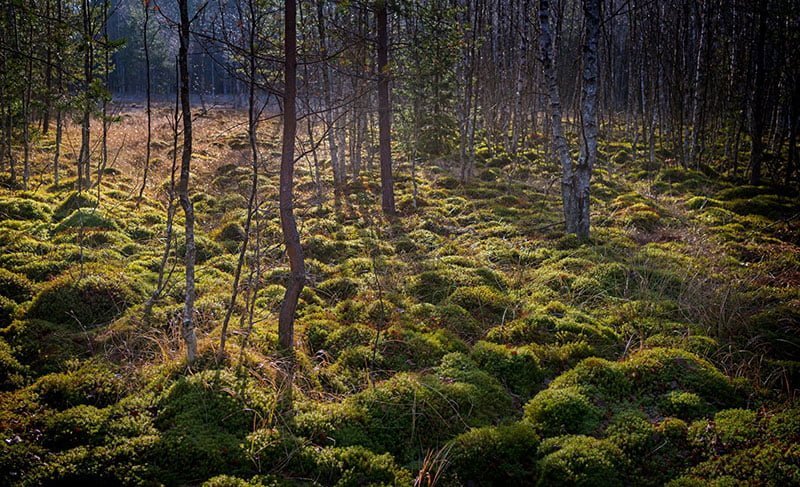
Though they are known more commonly as fens, marshes, bogs, mires, or swamps, peatlands are an important part of our ecosystem. Generally considered a type of wetland, they are, according to the International Union for the Conservation of Nature, “critical for preventing and mitigating the effects of climate change, preserving biodiversity, minimizing flood risks, and ensuring safe drinking water.” Sounds like a lot, right? And yet, because they are made of peat moss, these areas are subject to a variety of threats which put their existence in danger—despite the many benefits they serve. Here, we will explore what peat moss is, how we use it, as well as why and how conserving it can benefit us.
What is peat moss?
You may be familiar with peat moss. It is a common gardening aid sold all across the world and often used as soil—you’ve likely walked past bags of it in the outdoor section of your local home improvement store. You may have even seen it potted, or eaten food that has grown out of it. It’s possible that you have even worked with it yourself before without noticing. It is a very popular tool within gardening and horticultural circles, but so many of us know so little about it. Let’s start by answering the question—what exactly is peat moss?
If you have seen it before, then you’ll know peat moss as a brown fibrous material. It is made up of sphagnum moss and other organic materials which have decomposed in peat bogs over thousands of years which has then been dried and harvested—making it an easy substance for planters to work with.
How does it form?
To be more specific, the peat moss we tend to use for gardening comes from the lower levels of peat bogs. Sphagnum moss, which will have been long decayed by the time we get to it, has been compressed with rotted plants and other decomposed organic material into a workable, spongey substance in the lower, oxygen deprived levels of a peat bog. To extract it, the harvesting party must first drain the bog and then dig to it. After accessing the material, they move it into a designated area where it will dry out in the sun for a few days. After the moss has dried, it is scraped up with a harvester, moved to a factory, processed and packaged for distribution. This is the version of it that we know and use—100% organic and natural.
What makes peat moss different from sphagnum moss?
It can be easy to confuse the terms, but it is important to remember that peat moss is not the same thing as sphagnum moss alone. Both of these names represent unique things, and it would be harmful to use them interchangeably. Keeping that mind, here is a quick breakdown of the two forms so we can see how they are different from each other:
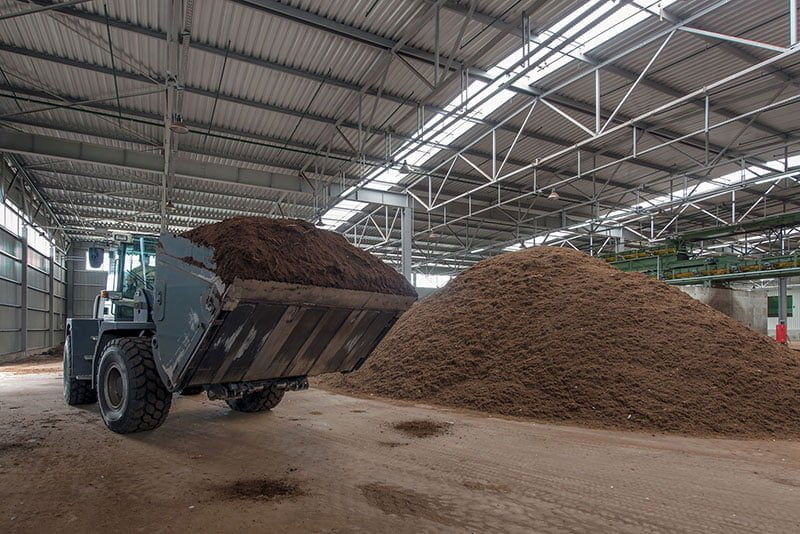
Peat moss, as we have already explained, is the material produced when organic matter is packed down into peat bogs. This can also be referred to as simply peat, but because a large percentage of the peat harvested is made up of sphagnum moss, we tend to combine the terms and call it peat moss.
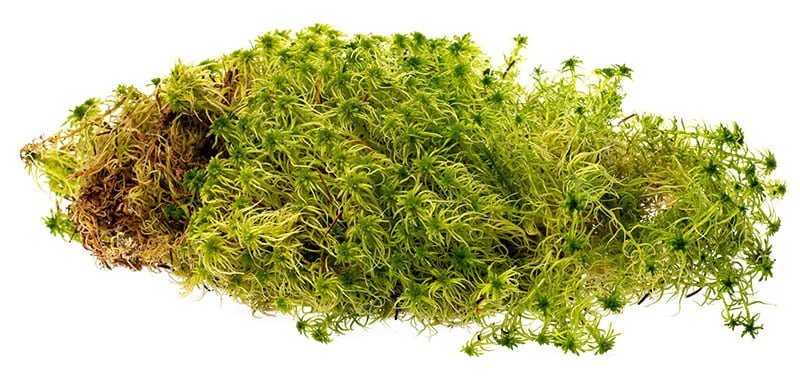
Sphagnum moss, on the other hand, is a plant. Usually, it grows on the surface level of a peat bog, favoring the cold and wet conditions. Over time, the moss will sink down until it hits the lower levels of the bog where there is no oxygen and where it will begin to decompose slowly. The combination of this dead material with other decayed organic matter will become peat moss.
What are the benefits of using peat moss?
Historically, peat moss has been burned as a fuel source in countries such as Finland, but these days, it is more widely favored in the horticulture scene—and with good cause. Here are just a few of the reasons that a person may opt for peat moss when tending to their plants:
Moisture retention—Peat moss is known for its ability to absorb and retain moisture, making it more than ideal for seed starting and the obvious choice for making sure plants are well hydrated.
Sterility—Another benefit of peat moss is its sterility. As there are no chemicals used to process peat moss, it arrives to gardeners’ disease-resistant. This means that plants which are more vulnerable to disease or parasites can thrive in a peat moss mixture, especially young plants.
It doesn’t compact—The problem with soil is that it compacts, and when that happens, water and air have no way through—hindering a plant’s ability to grow. Because peat moss is so moisture-retentive, it can act as a conditioner when added to soil, keeping it aerated and light.

Acidity—Peat moss rests low on the pH scale (3.5-6) and can be used to add any necessary acidity to a soil mixture. Many plants, such a strawberries, blueberries, or azaleas, will do well in a peat moss mixture. It can also be used to manage the overall pH of soil—especially alkaline soils—to suit your needs.
Availability—We touched on it earlier, but it is worth mentioning again just how easy it is for anybody to get their hands on a bag of peat moss. It can be acquired form any gardening store or plant nursery, which would explain how widely used it is.
Are there downsides?
The short answer is yes. While it may be a convenient to tend your garden with, using peat moss can have many drawbacks. For your personal use, here are the ones that are important to keep in mind:
Nutrient content—Peat moss contains no nutrients to nourish your plants with. If you use it, you will always have to add it to something else, be it compost, manure, or soil. Those costs are going to add up.
Acidity— The same acidity level that some plants thrive in can be harmful to others, and while peat moss can be a wonderful tool for managing the pH levels of your soil, it can also take a while for it to balance out.
Water activation—The dried peat moss sold commercially won’t have the water retention that is desired from it until it has been reactivated, which usually takes a significant amount of water.
These are only some of things to consider when you think about using peat moss in your garden. It’s not just what you’re growing, but how you’re growing it. However, the one downside we haven’t mentioned yet is the most important. Peat moss, as we stated earlier, serves many environmental purposes—so how does our continued removal and use of it impact those?
What does peat moss do for the environment?
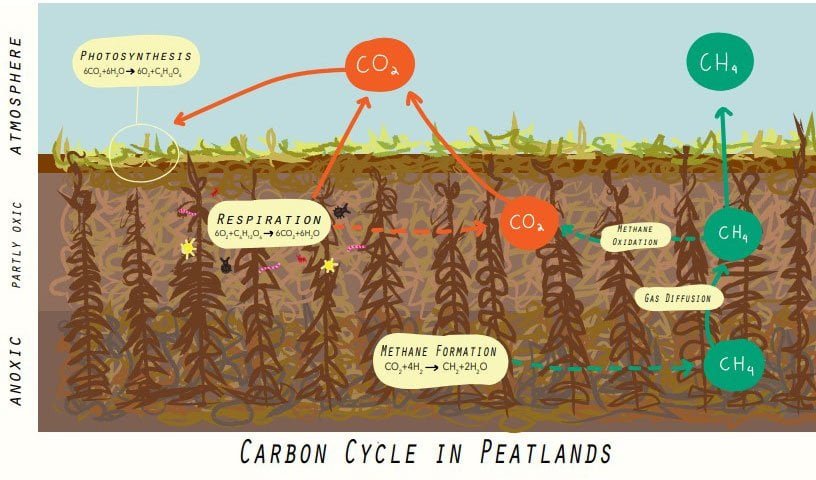
First and foremost, peat moss is crucial in our efforts to regulate climate change. According to the Pew Trust, despite only making up 3% of the earth’s land surface, peatlands make up 25% of the global soil carbon stock—nearly double the number of forests. The layers of peat store this carbon dioxide and when they are disturbed it is released—contributing directly to global warming. In fact, peatland damage accounts for around 5% of all unnatural greenhouse gas emissions.
However, when left undisturbed, peatlands regulate the flow of water. Due to the natural absorbency of peat and sphagnum moss, peatlands can hold on to rainwater and release it slowly over a long period of time—including the dry season. The same reason why peat moss is favored for planting is the reason why peatlands are useful for preventing flooding, drought, and fires. Their natural wetness also provides them with an immunity towards burning during wild-fires, improving the air-quality.
It's also important to note that peatlands support life. They are a rich source of biodiversity—due in part to their acidity, they provide a home to several rare and threatened plant and animal species. Loss of habitat can wipe these out, unsettling countless ecosystems. This is also true for the human communities that live near or on peatlands. Peatlands provide them with resources such as food of fiber; in many instances peatlands can be responsible for sustaining economies. They also filter water of harmful pollutants, sediment, and bacteria, making it clean and drinkable for people and wildlife.
Lastly, peatlands are a source of knowledge that we lose with their destruction. Because they are without oxygen, the lower layers of peat can preserve ecological and archeologic artifacts and records which would decay in a different environment. These artifacts and records can be studied if they are preserved, but they will be lost if they continue to be exposed as peatlands are damaged.
What are the threats facing peatlands?
As we know, peat moss takes thousands of years to form, making it a non-renewable resource and one which is severely underrated. They play critical roles in climate regulation, biodiversity, the prevention of floods and fires, and water filtration. With that in mind, it’s no wonder that their constant degradation and exploitation is proving a problem. These are the main culprits:
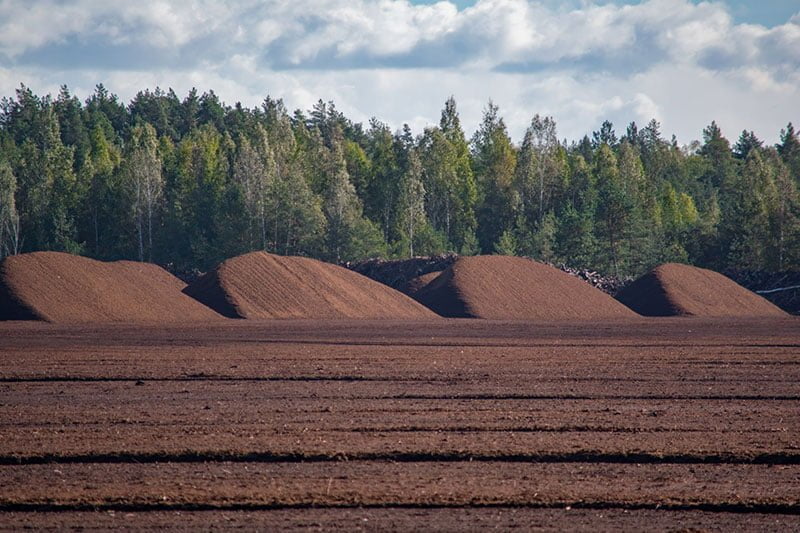
One of the largest contributors to peatland damage is drainage. Peatlands are drained for land development or agriculture—a process which has already depleted 15% of the world’s peatlands.
Another issue facing peatlands is global warming itself. Disturbing peatlands releases greenhouse gasses, but peatlands also face the negative consequences. Scientists are concerned about the rate at which peatlands are now drying out due to the rise in the average temperature.
We’ve seen how peat moss can benefit the garden, but now we have to consider how the over-harvesting of peat moss is hurting the environment. Peat moss is harvested, as we’ve explained, by scraping up a layer of a peat bog’s surface, which only grows approximately one-sixteenth of an inch per year. The rate of use dangerously outpaces the rate of growth, and that is, of course, alongside the amount of carbon being released by the process. Every bag of peat moss, then, comes at a cost much larger than the one you see on the sticker.
An Organic Soil Amendment from Coffee Grounds – a healthy alternative
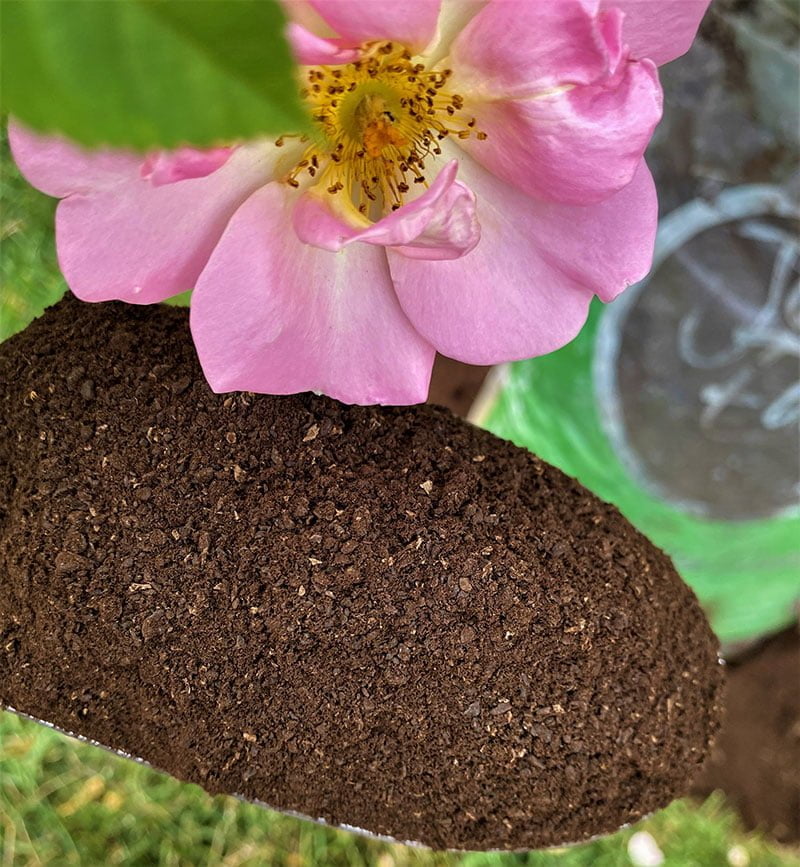
Spent coffee grounds are a byproduct from the brewing process that delivers that delicious cup of coffee. Coffee Grounds are one of earth’s largest sources of organic waste. The grounds are a unique organic material because of their high carbon content and water retention. Until recently, this abundant and valuable resource was typically disposed of in landfills across the United States. Using innovative technology, Sustainable Resources Group is now leading the challenge of upcycling organic residuals. Our coffee grounds are sourced directly from internationally recognized manufacturers of soluble coffee, and are byproducts of the production of instant coffee.
JavaEarth® is a 100% Organic soil amendment with benefits that mimic that of peat moss:
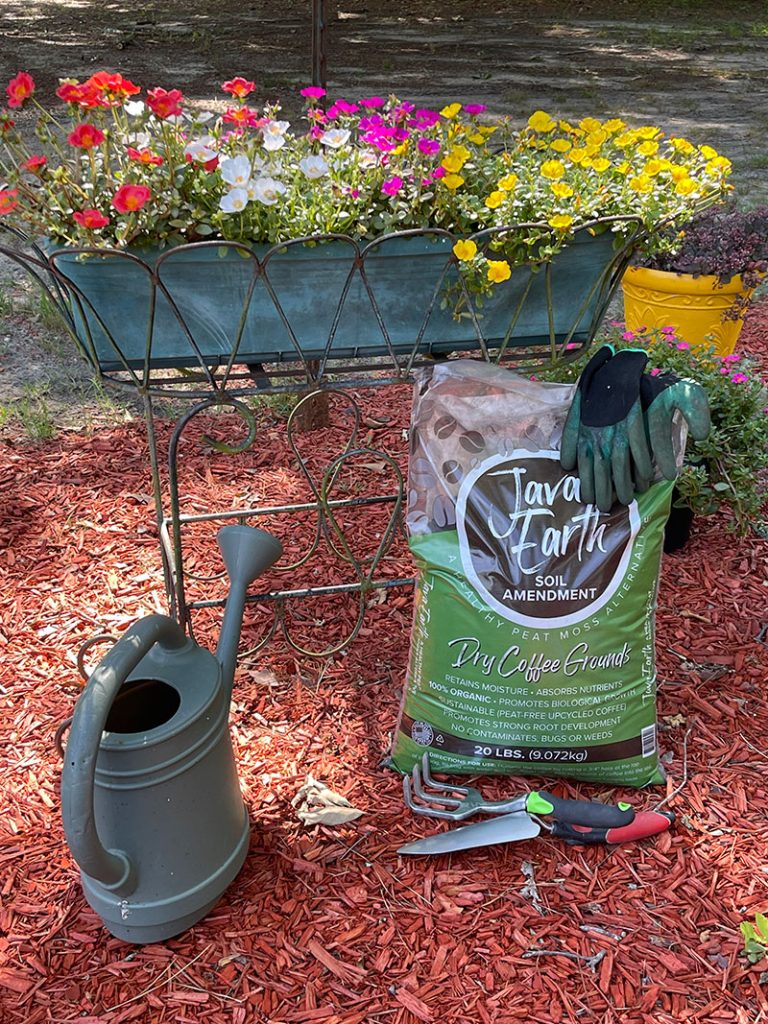
- Moisture retention—Coffee Grounds naturally absorb and retain moisture, making JavaEarth® an excellent way to regulate soil moisture.
- Sterility—Another benefit of JavaEarth® is its sterility. It has been cleared of contaminants and there’s no chance of introducing mold to your garden like with grounds saved at home.
- It doesn’t compact—The problem with soil is that it compacts, and when that happens, water and air have no way through, hindering a plant’s ability to grow. Because JavaEarth® Premium Soil Amendment is so moisture-retentive, it can act as a conditioner when added to soil, keeping it aerated and light.
- Acidity—JavaEarth’s pH is 4.7-6.2, which is in line with most potting soil mixes on the market. Like peat moss, coffee grounds are beneficial to such plants as strawberries, blueberries, or azaleas. It can also be used to manage the overall pH of soil—especially alkaline or as a base for a potting soil mix. View instructional video.
- Availability—Because coffee grounds have historically been a source of landfill waste, this resource is plentiful & sustainable.
Learn more: JavaEarth® Soil Amendment — Sustainable Resources Group
